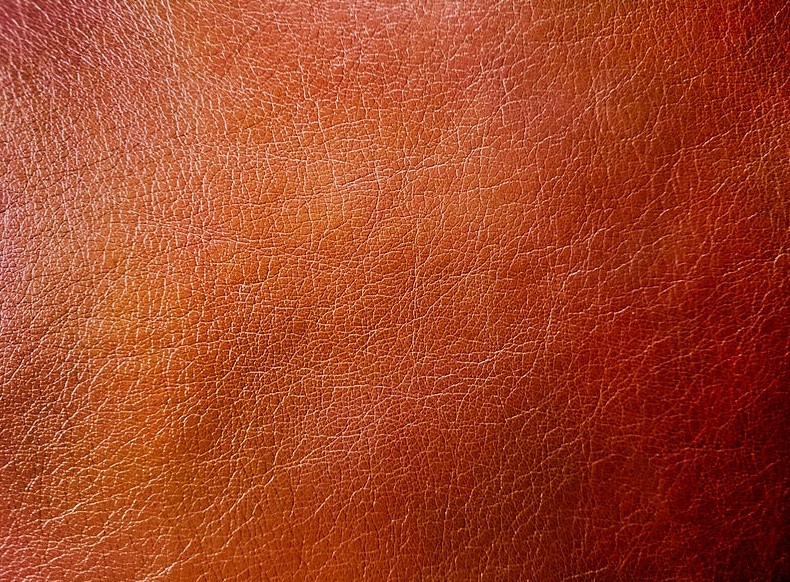
You can dye leather to enhance its appearances, and any piece of leather can receive a new lease of life. If you want to enliven leather fibres or restore them to their original colour, leather dye is a great option.
We'll discuss the benefits and drawbacks of dying on both sides of your leather furniture. You can tan any vegetable tanned leather, and we'll also provide tips on how to do it properly.
The grain side and the flesh side are the two sides of leather. The top grain side is the more common side to dye, but you can dye the flesh side too.
Dyeing leather adds colour to the surface of the material and leather fibres. It's a way to change the colour of your furniture or add contrast and detail to an existing design.
There are several reasons why you might want to dye leather furniture. Maybe you're trying to match a new piece of furniture to an existing set. Perhaps you want to dye leather to mask stains.
No matter your reasons to dye leather, it's essential to understand the pros and cons of the leather dyeing process before you get started.
Dyeing leather has some significant benefits. It's a relatively simple and inexpensive way to change the look of your furniture. You can also add multiple colours to create a unique two-tone effect.
The full range of leather dye colours ensure you can create a leather product you love with alcohol based dyes creating a richer style.
The main benefit of dyeing both sides of your leather furniture is that it will help protect the material from wear and tear. Staining the backside of the leather's surface creates a barrier that will prevent the colour from fading.
Another benefit in dying the grain and flesh side is that it will give your leather project or furniture a more uniform appearance. When you only dye one side of a leather item, the other side of the leather finish can look dull in comparison, and this goes for different leathers too.
There are drawbacks when you dye leather. For example, the colour may not be evenly distributed across the leather surface. Uneven dyeing can be unsightly, ruining a good piece of leather,
Another potential issue is that the dye may not be permanent. It could fade over time, especially if it's exposed to direct sunlight. And if you're not careful, you could end up with streaks or blotches on your furniture.
Dyeing both sides of your furniture will take twice as long, and it will use a lot more dye.
If you've decided that dying your leather furniture is the right option for you, there are a few things you need to know about the leather dyeing process.
First, you'll need to choose the right type of leather dye. There are two main types of dyes: water-based and oils. Water-based dyes are easier to apply, but they don't penetrate the leather. Oil based dyes are more difficult to use, but they produce a more durable finish.
For the best leather dyeing process, it makes sense to take a lead from leather crafting professionals.
Once you've selected the right type of dye, you'll need to prepare the leather surface. This involves cleaning it with saddle soap, or even denatured alcohol. You should also remove any dirt, grease, or other contaminants from the top layer that could prevent the dye from adhering.
Once the surface is clean, you're ready to apply the dye but don't jump straight in!
Remember to wear gloves when using the dye application, and dip your cloth, sponge or wool dauber into your leather dye. Rub the dye in a circular motion until you have covered the leather piece with dye.
Don't overlook the edges, these areas need an even coat, and you can use more dye to cover them. For a lighter colour leather, less dye or a dye reducer helps.
You might need to allow a few hours for the leather dye to dry, don't skip the drying process.
This first coat of your leather piece is very important, but other coats are needed before the finished product. With more coats, and more dye, the dye starts to permeate deeper.
With other coats, use the same circular motion, but from a diagonal angle in an even coat. This permeates leather fibres, making the finished leather look even better.
Avoid excess dye on the leather surface if you can. For peace of mind, try some leather dye on a scrap piece of leather to see if there are any issues with the dying process.
After you've applied the dye, you'll need to seal it. This will help protect the colour from fading and prevent it from rubbing off onto your clothing. A common method is to use clear leather sealer or a topcoat of paint.
Leather conditioner, such as neatsfoot oil, helps protect leather, and extend its lifespan.
Dyeing leather is a great way to change the look of your furniture without having to buy new pieces.
Of course, you can use leather paint instead of a leather dye.
After you've dyed your leather furniture, you'll need to take some steps to ensure that the colour stays vibrant and doesn't fade over time.
Avoid exposing the leather to direct sunlight. This can cause the colour to fade.
Don’t use harsh cleaners or chemicals on the leather. This damages the finish and can cause the colour to fade. Shoe polish is a great way to remove scuffs from your leather.
Dyeing leather is a great way to create a brilliant final product, and great dye colours help you achieve the leather finish of a skilled leather crafter,